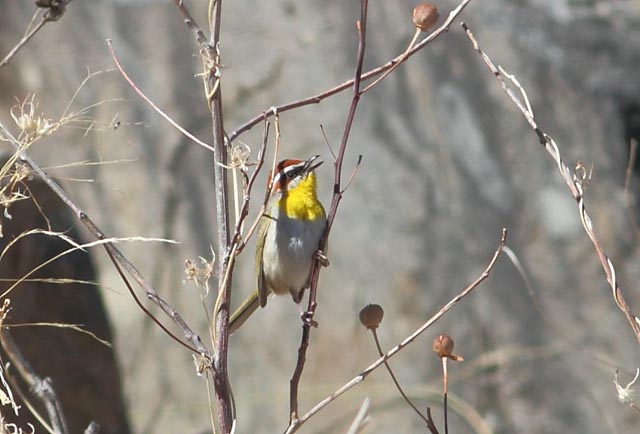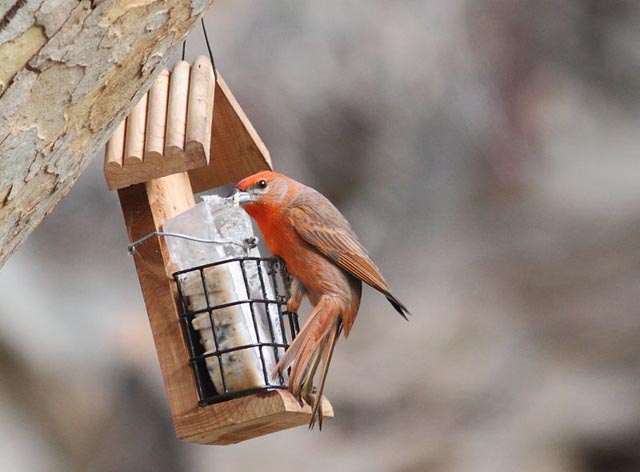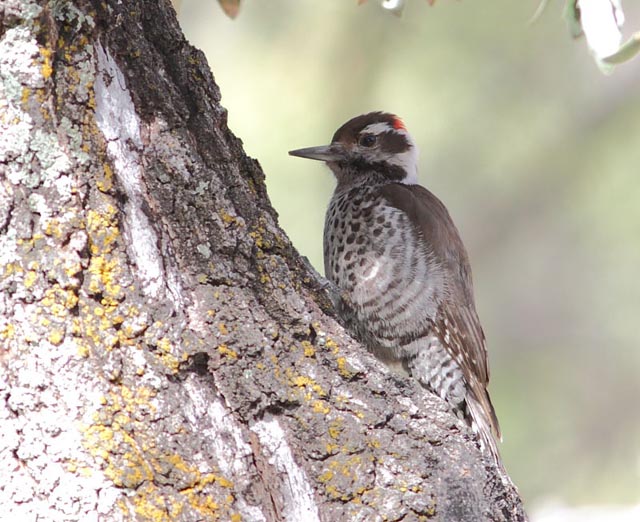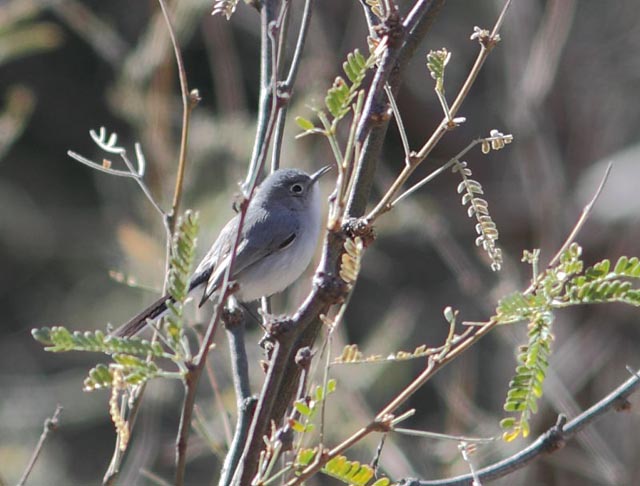From the Field
February 5: Jake Mohlmann from his ongoing tour to Southeastern Arizona
Our first few days were stuffed with rare and exciting birds. One of best was a very approachable pair of Rufous-capped Warblers at one of their few known locations in the U.S., while a pair of Golden Eagles soared overhead and Black-chinned Sparrows bathed nearby. The group's photographers were glued to their viewfinders.
Rufous-capped Warbler
In world-famous Madera Canyon a showy male Elegant Trogon perched high above an equally garish male Hepatic Tanager that was visiting a suet feeder while a pair of Arizona Woodpeckers fought for space on a particularly productive branch and took turns flaking off bark to search for morsels.
<pHepatic Tanager
<pArizona Woodpecker
At Patagonia Lake another rare breeder, Black-capped Gnatcatcher, all but posed for pictures while serenading the group with its cat-like mewing calls.
Black-capped Gnatcatcher
All this excitement in such splendid surroundings and still so much to come....
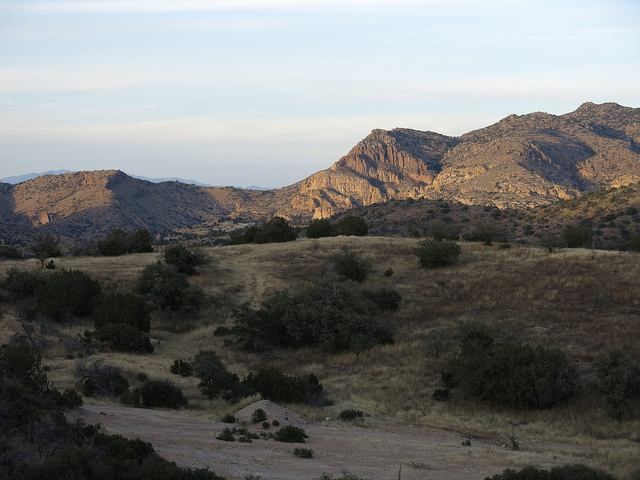
A Southeast Arizona winter view
January 29: Paul Holt from his on-going tour of Southern India
We got off to a rocky start as access to most of the sites around the hill station of Ooty was restricted as a man-eating Tiger was on the loose. Nevertheless we knew of alternative sites, and the vast majority of the region's specialities, including Grey Junglefowl, Black-chinned (or Nilgiri) Laughingthrush, Black-and-orange and Nilgiri Flycatchers and Nilgiri Pipit were soon 'in the bag'.
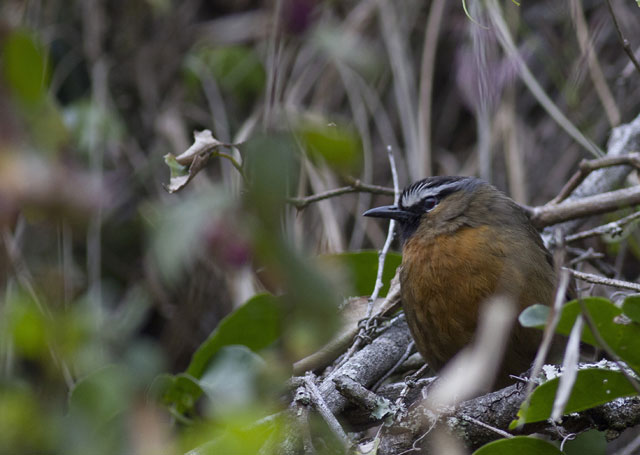
Black-chinned (or Nilgiri) Laughingthrush
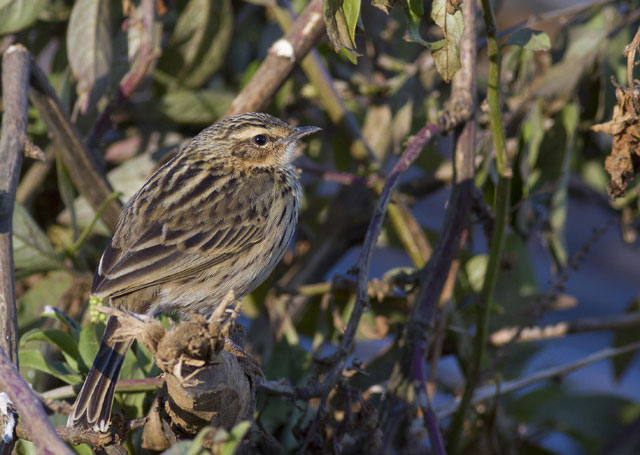
Nilgiri Pipit
Other goodies, not endemics but hardly second division fare, included close encounters with a juvenile Rufous-bellied Eagle and a host of mammals. Our second port of call, Mudumalai NP, was just as exciting and rewarding,as Ooty. Highlights here included a solitary White-bellied Minivet, numbers of Malabar Parakeets, Jungle and several elusive Painted Bush-quail.
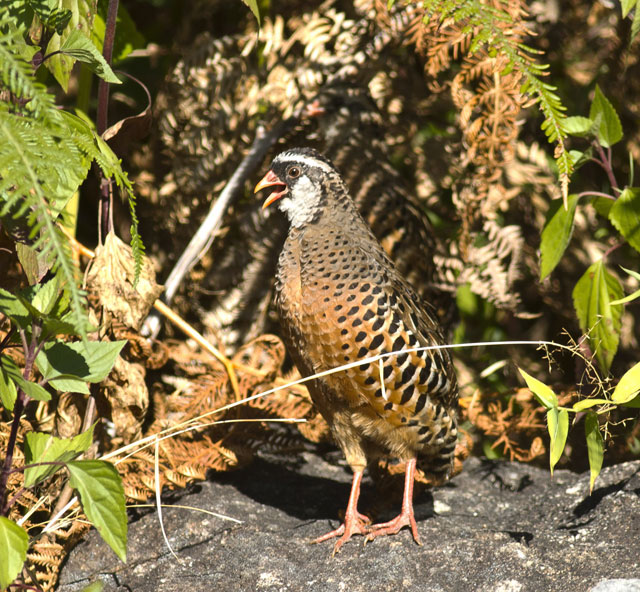
Painted Bush-quail
Our second hill station, Munnar, was similarly productive with astonishing looks at more Painted Bush-quail as well as Indian Broad-tailed Grassbird, umpteen White-bellied Blue Robins and more Kerala Laughingthrushes than you could shake a stick at. The spectacular scenery - Munnar's peaks host Nilgiri Thar, one of the world's rarest goats - the birding, mammal viewing, food and accommodation all exceeded our expectations -as they did at Periyar NP, just over the State border in Kerala.
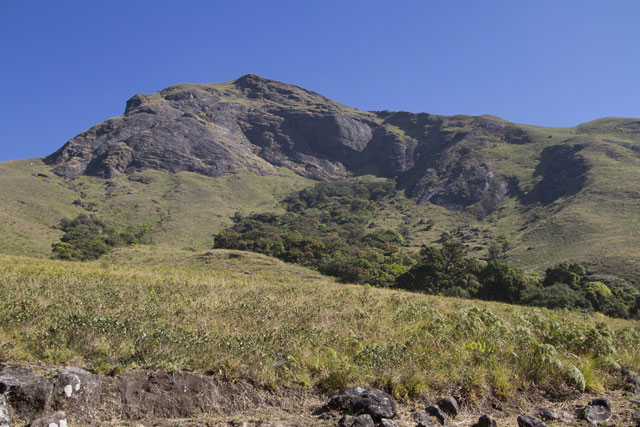
Rajamalai Sanctuary, Munnar
January 24: Jared Clarke on the conclusion of his Winter Newfoundland tour
There were smiles across the board this week as we had a fabulous dose of winter birding in the easternmost reaches of North America – Newfoundland’s Avalon Peninsula. Perhaps the biggest highlight came on the very first morning, as we soaked in great views of a very rare Common Snipe at Ferryland – just the third record for the province and all of eastern North America - and we were able to compare this amazing bird with its North American cousin, a Wilson’s Snipe, hanging out just meters away!

Other highlights included finding Dovekie, a "lifer" for everyone in the group, at several locations, some of them providing great views as they bobbed around in the surf right along shore.

Dovekie - Bruce Mactavish
Purple Sandpipers were discovered resting and feeding among the wave-beaten rocks of Cape Spear National Historic Site;

Purple Sandpipers - Bruce Mactavish
a King Eider made an appearance in the rough waters of Bear Cove along the Irish Loop and a family of Gray Jays popped in to check us out along the forested roadsides. Dozens of Tufted Ducks were spotted around the various city ponds as a record number have been spending the winter here.

Tufted Duck
Other European waterfowl included as many as five Eurasian Wigeon and three Eurasian (Common) Teal illustrating how St. John's is the best location on the continent to see these species in winter.
Gulls are an integral part of the winter scenery in and around St. John', and they did not disappoint. A total of ten species were found during the week, including thousands of Herring, Great Black-backed and Iceland Gulls, several hundred Glaucous Gulls, four dozen Black-headed Gulls,a handful of Lesser Black-backed Gulls and three European Mew (Common) Gulls. The array was mind-boggling and everyone learned a lot about these often under-appreciated birds!

Black-headed Gull
Finally we should say too that winter in St John's and the surrounding countryside is extremely beautiful.

The Battery, St John's

It was indeed an excellent week spent with great birds and great people!
January 23: David Fisher from his on-going tour of Kenya: Part 2
We had an unusual experience during our visit to Lake Baringo and the early morning walk along the nearby escarpment. As the sun roses behind us, the cliffs turn from deep red to golden brown and the birds came to life. A Lanner sat on the cliff face calling and watching for an easy breakfast below.

Lanner
The pair of Verreaux's Eagles, just returned to these cliffs after a lengthy absence, cruised back and forth along the cliff face above us. Suddenly the Lanner was up in the air attacking the eagles, repeatedly diving at one bird which landed on the cliff top to take shelter.

Verreaux's Eagle
Later that day we moved on to the wonderfully relaxing Rondo Retreat in the heart of Kakamega forest, where the garden full of birds included a remarkably tame White-spotted Flufftail which we watched tossing leaves in a streambed as it searched for food.

White-sp0tted Flufftail
This was just one of the many highlights in Kakamega, a location that added another hundred species to our bird list, and when we left there for the Masai Mara we had already seen a remarkable 520 species; what an amazingly bird-rich country this is...
January 13: David Fisher from his on-going tour of Kenya
I can reconfirm that Kenya has lost none of its fantastic diversity: the first day of the tour, spent in Nairobi National Park produced 145 species of bird and 22 mammals and by end of day four the trip list had reached 328! Numbers of course don't bgin to tell the story. Watching displaying Long-tailed Widowbirds with snow-capped Mt Kenya as a back drop is hard to beat. High in the Aberdares, close to 12,000 feet a Scarlet-tufted Malachite Sunbird fed on Ostrich-plumed Lobelias, while Moorland Francolins called nearby and provided a lifer, not only for the participants but also the leader (despite this being his 32rd tour to Kenya). The raucous calls of Hartlaub’s Turacos are a frequent sound in the highland forests and while most birds are shy one this year was highly curious and kept coming closer peering at our open-topped land-cruiser and the emergent heads of the group peering back. While after dinner three Large-spotted Genets fought for the best pickings from the ‘genet table’ at Mountain Lodge. To be continued...
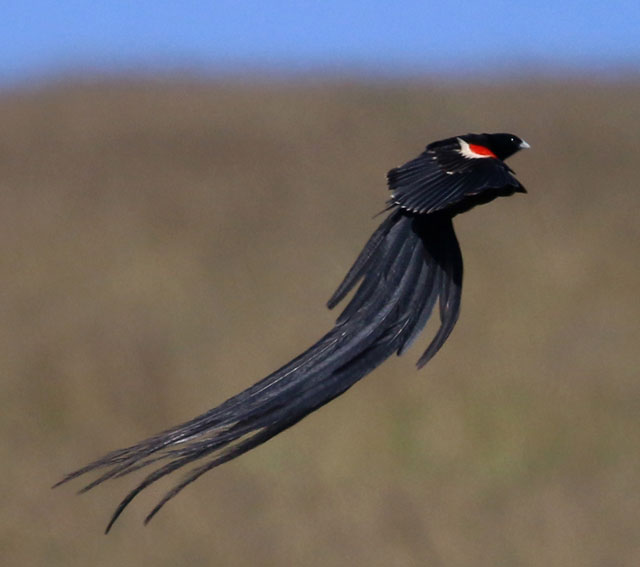
Long-tailed Widowbird
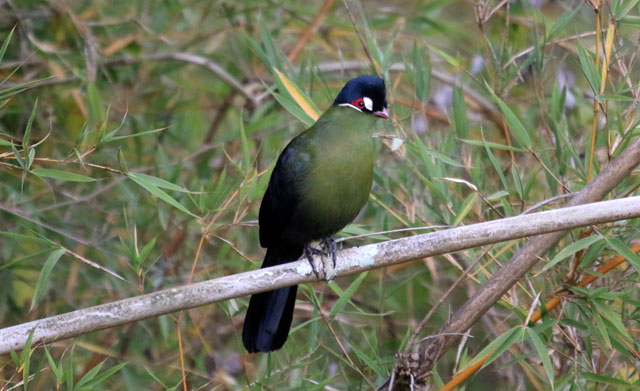
Hartlaub's Turaco
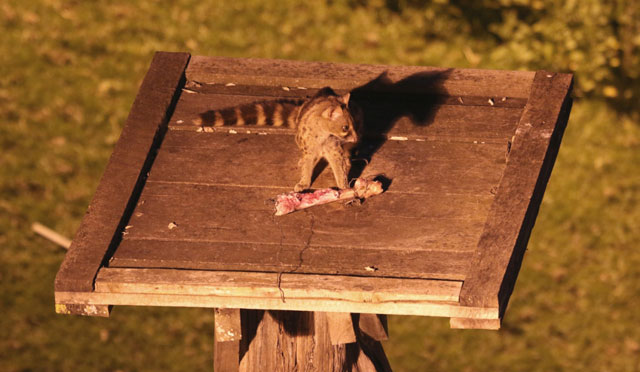
Large-spotted Genet
December 9: Steve Rooke on his just-completed tour of Ethiopia
Despite being my 18th tour to wonderful Ethiopia, this year still held a number of new or unusual encounters. High among those was finding the endemic Salvadori’s Seedeater at a new site, removing the need to take the long drive down to Sof Omar. This joined the long list of endemic birds and mammals that make this tour so attractive - whether it was the regal Prince Ruspoli’s Turaco cooing at us from an acacia

Prince Ruspoli's Turaco
or a sleek Ethiopian Wolf hunting Giant Root Rats on the Sanetti plateau, or impressive male Gelada Baboons

Ethiopian Wolves

Gelada Baboon
or endearing White-tailed Swallows flying through the open window of our parked vehicle to look for a nest site, or the endangered Liben Lark clinging to its fragile existence.

Liben Lark
But as always there was so much more to our Ethiopia tour than endemics – finding Somali, Heuglin’s and Temminck’s Coursers within a few hundred yards of each other, watching hundreds of migrating Lesser Kestrels hunting over grassland, relaxing along the shore at Bishan Gari
,
Bishan Gari
enjoying the endless photographic opportunities of the Lake Zwiay fish market with its hordes of attendant Hamerkops and Great White Pelicans, seeing Eastern Paradise Whydahs in full breeding display, or even buying freshly dried green coffee beans to have them hand roasted to take home – Ethiopia never fails to entrance, surprise and delight.
December 3: Gavin Bieber on his scouting trip to the new Canopy Camp in Panama's Darien Foothills
I just finished a wonderful two day scout of the new (still in the last phase of construction) Canopy Camp in Panama's Darien Foothills. On our March tour, all will be in order and we'll stay in comfortable and large African-style hardwood floor tents wih private baths, and take our meals in this attractive and functional open-air building. And the birds? Well, in just two short morning outings here are a few highlights; Gray-cheeked Nunlet, Red-throated Caracara, Spectacled Parrotlet, Barred Puffbird and Black Oropendola! I can't wait to come back!
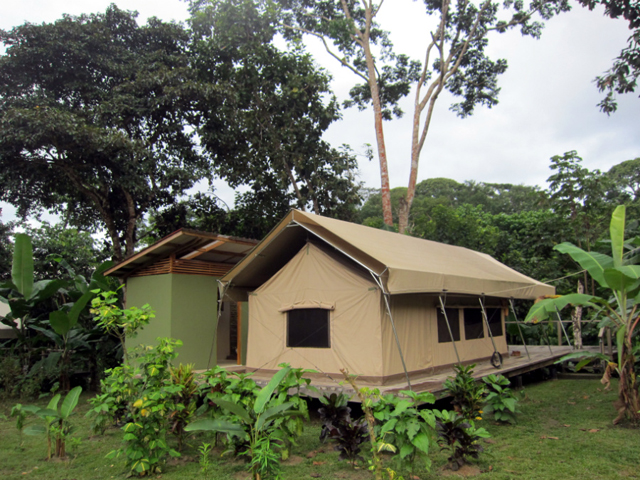
Canopy Camp Tents (in preparation)

Canopy Camp Dining Room (in preparation)
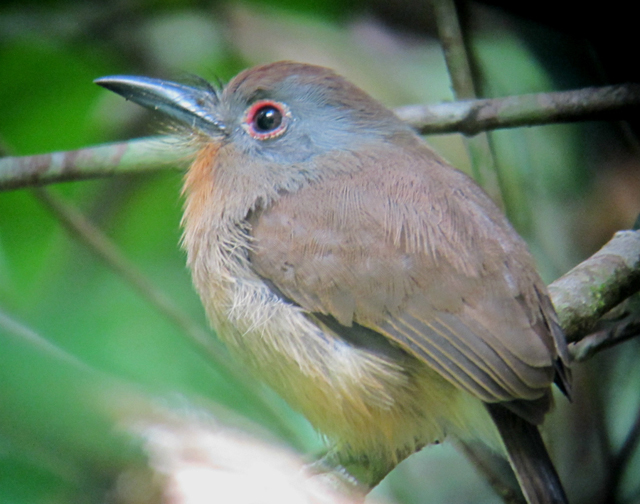
Gray-cheeked Nunlet
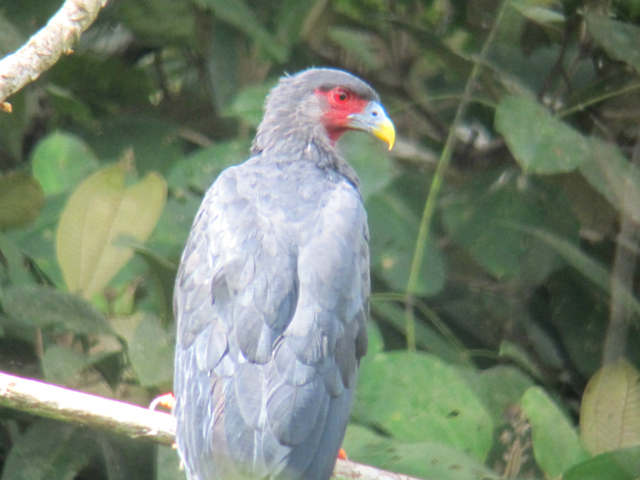
Red-throated Caracara
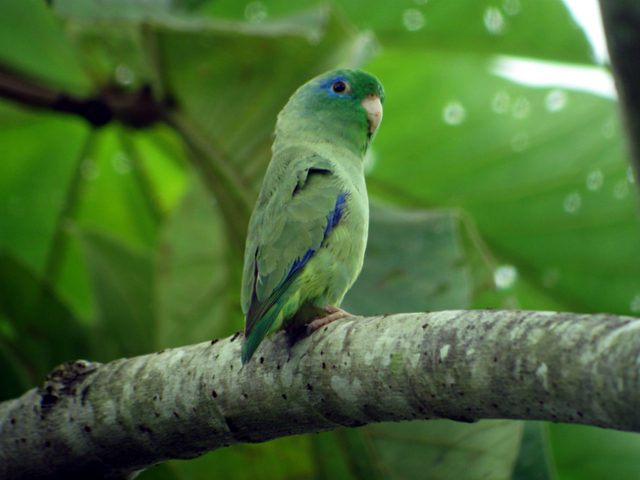
Spectacled Parrotlet
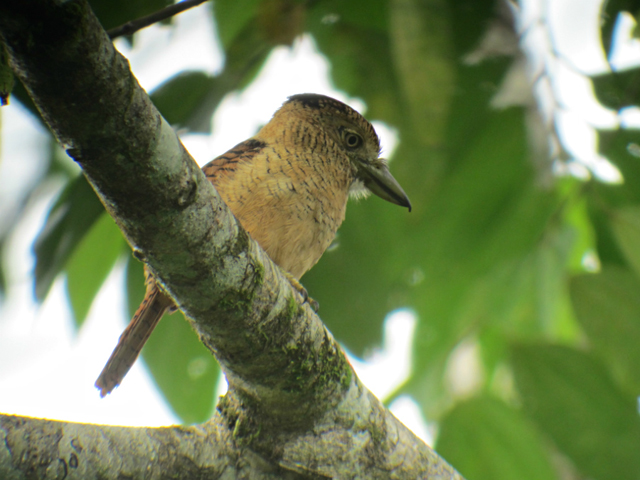
Barred Puffbird
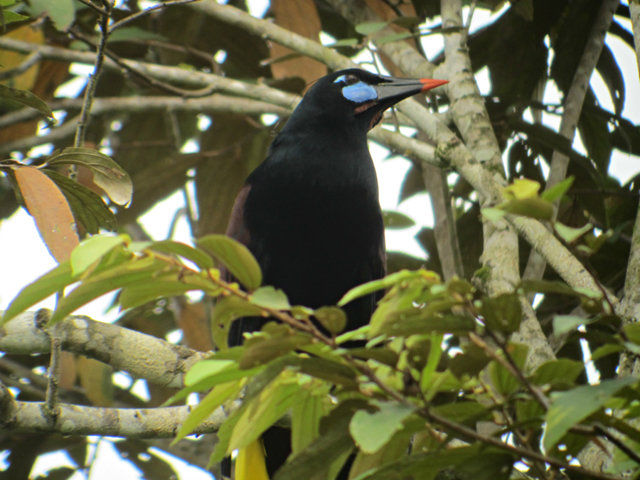
Black Oropendola
November 28: David Fisher on his just-completed tour of Northwest Argentina
This was my best visit to Argentina's Andean region yet. In the Yala Valley the black-breasted race of Torrent Duck performed well, while the Rufous-throated Dipper, though initially elusive finally gave itself up and sat preening in the early morning sunlight. Close by a pair of the rare and endangered Red-faced Guans popped up right beside the road giving the closest views ever. Higher up Lago Pozuelos had lots of water and was in great shape with large numbers of all three flamingos and nesting Giant Coots and Andean Gulls. I even had a lifer in the form of a Streak-backed Antbird, on the edge of the Chaco - a rare event after 18 tours there. I'm already looking forward to returning next year to co-lead a more extensive Northern Argentina tour with Ricardo Clark.
Thanks to Richard Bayldon for both images, below.
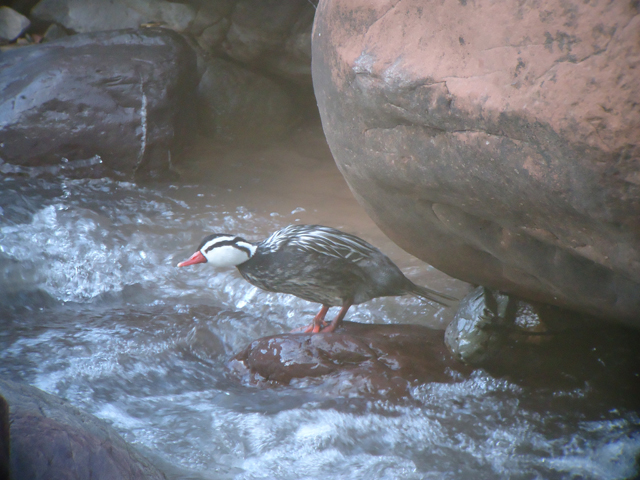
Torrent Duck
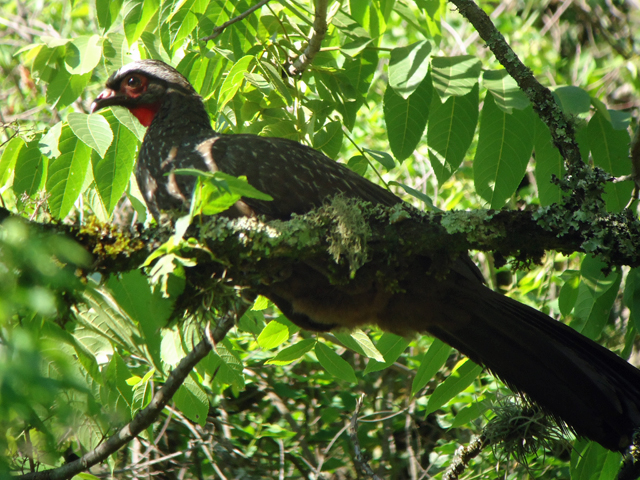
Red-faced Guan
November 27: Steve Howell and Fabrice Schmitt on the conclusion of their tour of Chile
A combination of Fabrice’s local knowledge, Steve’s many years traveling in Chile, good weather, a great group – and, of course, pure luck, contributed to a wonderful tour and a record number of species. But numbers aren’t everything, and highlights additional to our last report were many and varied – including of course the incredible scenery, from towering snow-capped peaks and hanging glaciers to the stark contrast between the barren Atacama Desert ‘moonscape’ and the adjacent lowland valleys. Avian highlights included Puna Flamingoes walking on a frozen roadside lake, superb views of the poorly known Peruvian Martin, point-blank views of the tiny and highly endangered Chilean Woodstar,and the first Curlew Sandpiper recorded in Chile. All in all a simply amazing trip!
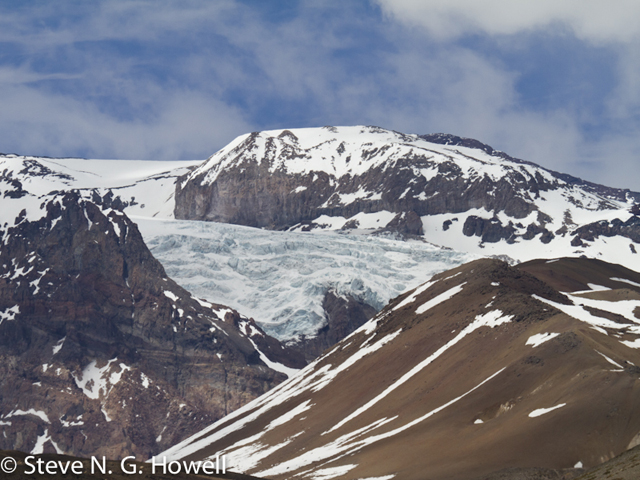
Hanging glacier in the El Yeso Valley
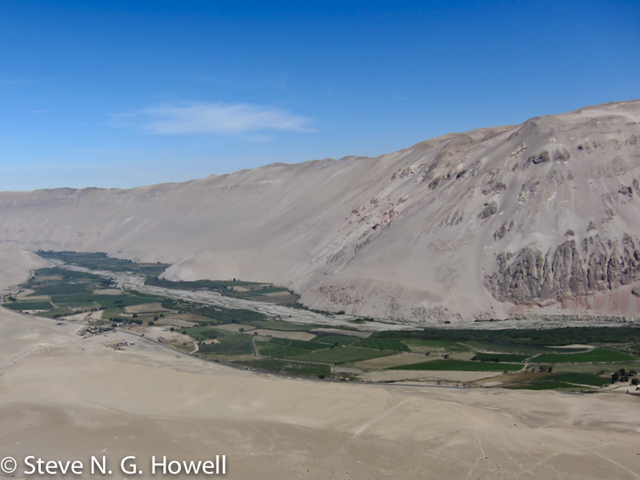
Atacama Desert surrounds the well-watered Lluta Valley
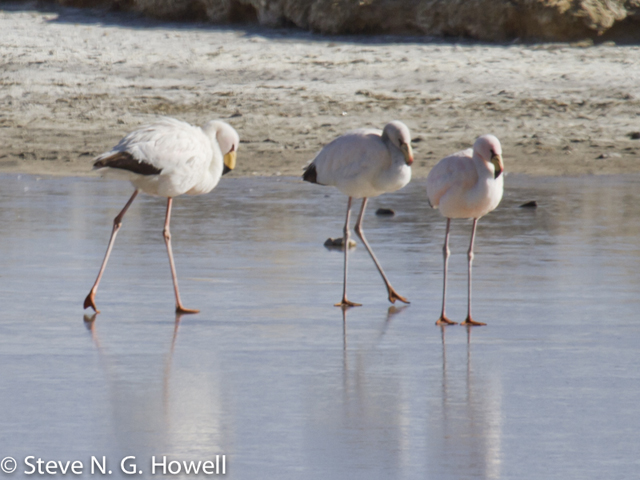
Puna Flamingos waiting for the thaw
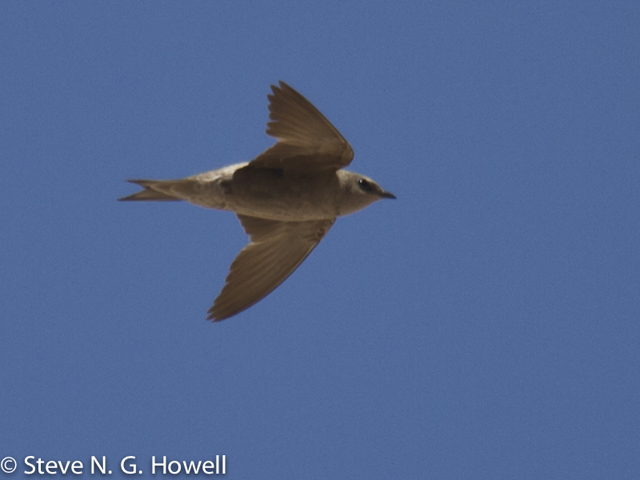
The poorly known Peruvian Martin; here a female
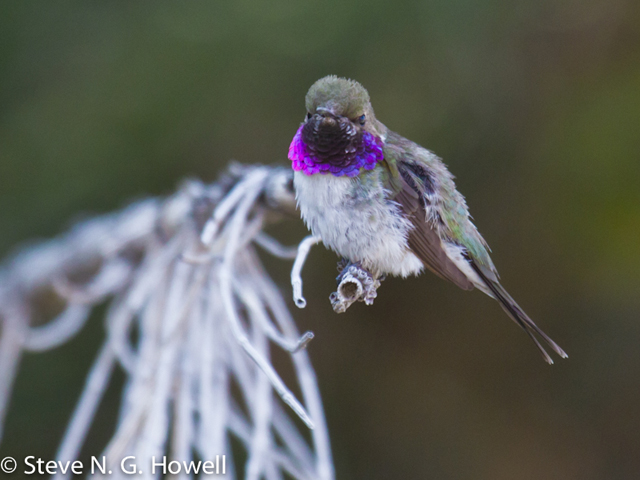
Male Chilean Woodstar
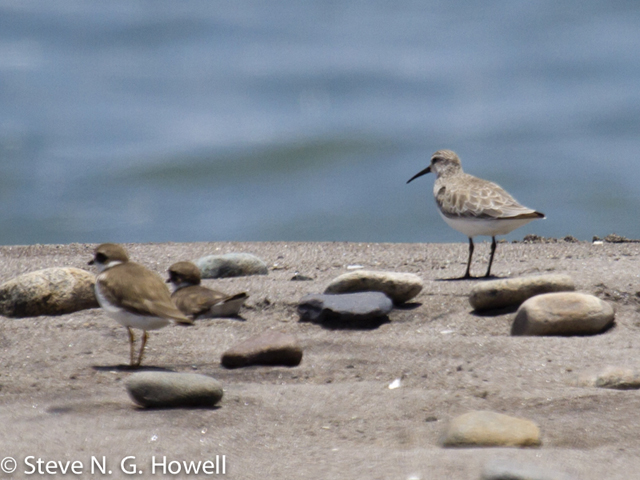
Chile's first Curlew Sandpiper
November 26: Jon Feenstra from his scouting trip to La Selva Lodge, Ecuador
Though the luxury of the place was largely lost on me, waking early and spending the entirety of the days out in the jungle, the setting in such fantastic habitat is more than one can ask for. Without getting into a car, in one week of birding I tallied 316 bird species including 42 species of antbird, 5 species of trogon, and a Rufous-vented Ground Cuckoo, my singular highlight and a bird that possesses nearly mythical status in the neo-tropics (I managed excellent photos of the leaves and sticks in front of it). Really, though, the good things kept coming and each day was alive with diversity of everything, from birds to amphibians to primates. Here are a few images including one of Scale-backed Antbird taken at night with my cell phone as it slept under a leaf along a trail.
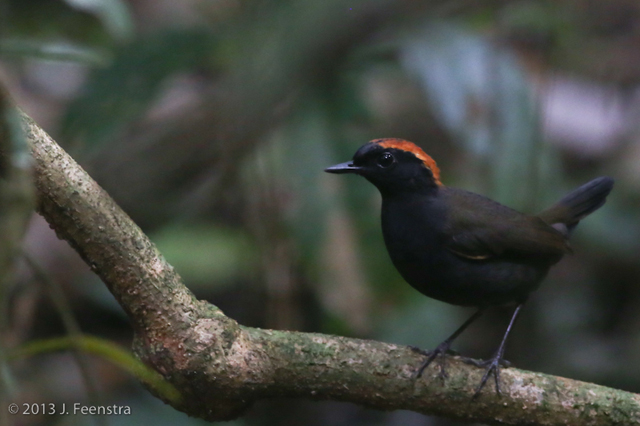
Rufous-capped Antthrush
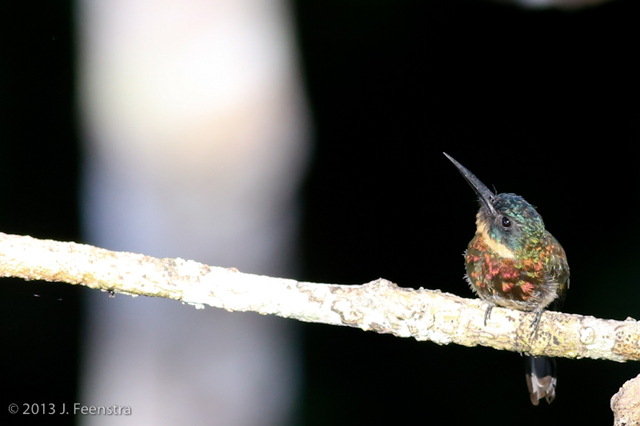
Purplish Jacama
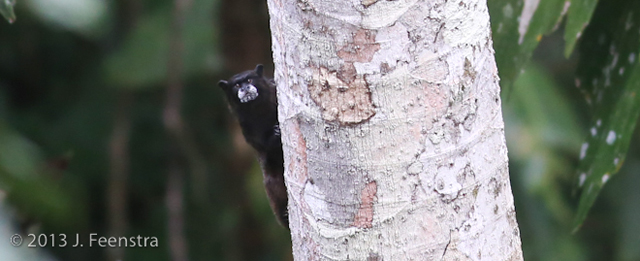
Tamarind
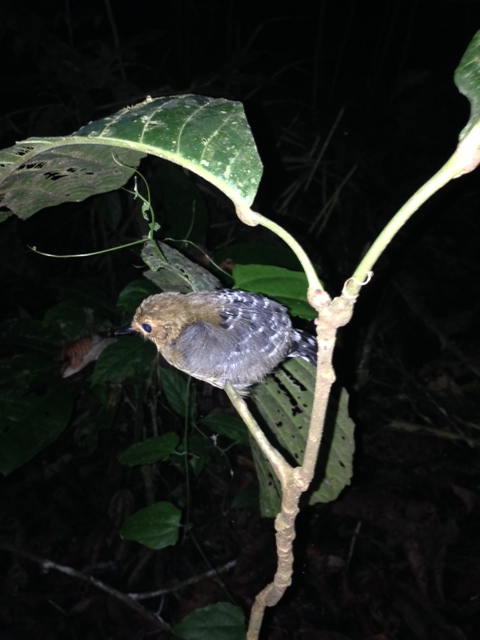
Scale-backed Antbird

